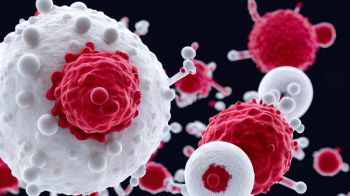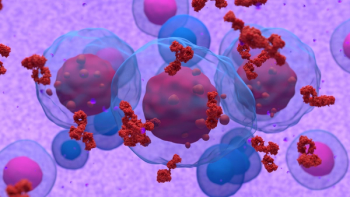
Q&A: Avoiding Exhaustion, Soreness During Subcutaneous Injections
An oncology nurse shares advice for avoiding exhaustion and soreness when administering subcutaneous injections.
With an increasing number of subcutaneous drugs available in cancer treatment, oncology nurses are spending more time administering these injections, which can lead to exhaustion and soreness.
Daniella Webster, RN, BSN, OCN, an oncology nurse experienced in subcutaneous administration, shared her advice on avoiding these issues and counseling patients before injections.
Oncology Nursing News: How can oncology nurses administering time-consuming subcutaneous injections avoid becoming exhausted or sore?
Webster: When you’re sitting there administering something for 5 to 10 minutes, that takes a lot of effort. Your hand really has to be steady the whole time while you’re pushing and administering. We have nurses with carpal tunnel issues, hand problems and [other issues], and they have to consider that piece of it.
…Several years ago, 1 of our nurses had introduced us—and now it’s an approved part of our process and our protocol—[to using] a butterfly needle to initially place the subcutaneous needle. We put some gauze [on the injection site], we tape over it, and that way it’s very steady the whole time. Then we can very slowly give it. We can adjust our hands a bit more, because now we have a bit more distance to it, and I think for the patients, that makes it a lot more comfortable than when our hand is starting to get tired over time [and] moving, too. For any new facilities that aren't using it, it’s great to look into that part of the process and see if that’s something that they can do at their facility as well.
…In some ways it’s more time-consuming for the nurse. On the patient side, it’s much quicker, right? We’re not placing an IV; we’re just doing this medication. Maybe [there are] premedications, maybe there’s monitoring, but the overall time is faster. From the nurses' perspective, it’s a quicker turnover, so it means we have to get everything done with our patient very fast: going through educating, assessing, making sure everything’s appropriate for them for the day, and then we’re spending that time and sending them on their way.
What are some techniques you use when administering subcutaneous injections?
Webster: When administering [the injection], I use a second hand, and I can do a little bit of an extra movement that almost distracts the patients. [There are] more nerves in the surrounding region [to the injection site], so sometimes I can [apply] even a squeezing or pressure.
I also think it’s really important to talk to the patient about your process before you do it. I always tell them what my preference is, and I check in, and I make sure that they’re OK with that. I tell them, “For your medication today, I’m using this butterfly needle.” I explain why I use it and how I’m going to do it, and most people are agreeable to that.
If I’m doing a standard subcutaneous injection that only takes 30 seconds to a minute, I also will talk to them about how fast I’m going to give it. I’ll verify: “Are you OK if I do this slowly? Do you prefer it faster?” Most patients have a lot less burning and discomfort when we give those medications very slowly, but I have occasionally had a patient who said, “Why is it taking you so long?” [and have me] slam it in there. It’s always an important piece to keep the patient involved. They’re the central piece in all of this, right? And they have to advocate for themselves, and they don’t always know how. By asking those questions and keeping them involved—[it] really makes a big difference.
What should oncology nurses keep in mind when counseling patients on subcutaneous administration?
Webster: [Before] counseling patients, it’s important to always review the possible [adverse events (AEs)] that can happen. In general, the patient’s [AEs] are still going to be the same, whether subcutaneous or IV. The only difference is that there may be more skin irritation with [subcutaneous drugs], so always [make] sure the patient is in the loop with all of that.
Where should nurses expect to see more subcutaneous formulations in oncology?
Webster: I’ve started seeing it now in immunotherapies. There is an immunotherapy called atezolizumab, or Tecentriq. It’s for lung cancers primarily, and they have now, at least at City of Hope, approved us administering that one subcutaneously over about 10 minutes. I’ve heard [about] some trials on other immunotherapies, common ones that we give.…Some of the more frequently used ones, they’re starting to look at and see, “Is there the same level of efficacy with these medications? How are the [AEs], and all of those things with it?” Generally, the [patients] are doing well, so that’s why they’ve been turning to that.
This transcript has been edited for clarity and conciseness.
Newsletter
Knowledge is power. Don’t miss the most recent breakthroughs in cancer care.

















































































